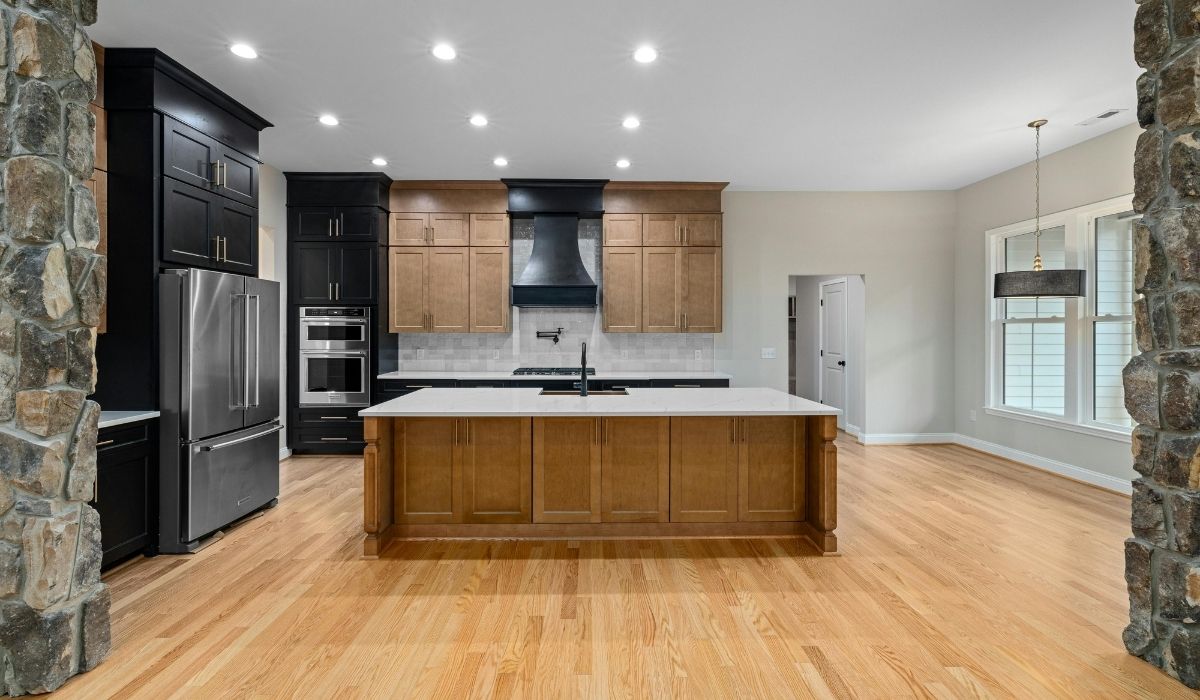Kitchen remodeling can range from a light refresh to a complete structural overhaul, with each option tailored to specific goals, budgets, and timelines. Understanding the types of kitchen remodels available helps homeowners make informed decisions to create a space that reflects their lifestyle and design preferences.
Common Types of Kitchen Remodeling Projects
Kitchen remodels are typically categorized by scope, complexity, and investment level. Below are the four most common kitchen remodeling types:
1. Cosmetic Kitchen Refresh
A cosmetic refresh is the most affordable and least disruptive kitchen update. It focuses on visual improvements without making any changes to the kitchen’s structure or layout.
What it includes:
-
Cabinet repainting or refinishing
-
New cabinet hardware (handles, knobs)
-
Backsplash upgrades
-
Countertop replacement (e.g., laminate to quartz)
-
Modern light fixture installations
Ideal for: Homeowners who want a budget-friendly kitchen makeover or a quick upgrade before selling their home.
2. Pull-and-Replace Kitchen Remodel
This approach involves removing and replacing all major elements while retaining the existing kitchen layout.
What it includes:
-
New cabinetry and drawer systems
-
Updated kitchen appliances
-
Flooring replacement
-
New backsplashes and lighting
Ideal for: Those seeking a full kitchen upgrade using higher-end materials without the added cost and complexity of structural changes.
3. Full Custom or Structural Kitchen Remodel
This is a comprehensive kitchen renovation that allows complete freedom in design. The kitchen is typically gutted to the studs, and a new layout is constructed.
What it includes:
-
Major layout reconfiguration
-
Removal of walls to create open-concept spaces
-
Custom kitchen cabinetry and high-end countertops
-
Premium appliances and built-in systems
-
Upgraded plumbing, gas, and electrical systems
-
Custom lighting, flooring, and ventilation
Ideal for: Homeowners creating a luxury kitchen in their forever home, solving layout flaws, or expanding functionality for long-term needs.
4. Kitchen Addition
A kitchen addition involves increasing the square footage of the kitchen, often extending the home’s footprint.
What it includes:
-
Home expansion with new walls, roofing, and foundation
-
All features of a structural remodel (custom cabinetry, layout, upgrades)
-
Extensive permitting and design planning
Ideal for: Families who have outgrown their kitchen space, want a larger area for cooking and entertaining, and are ready to invest in a home expansion.
Kitchen Layout Types: Choosing the Right Flow
The layout you choose is essential to both the function and form of your new kitchen. Below are the most common kitchen layout designs considered during remodeling:
• One-Wall Kitchen
All cabinets and appliances are positioned along a single wall.
-
Best for: Small homes, lofts, or studio apartments
-
Advantages: Space-saving and cost-effective
• Galley Kitchen
Two parallel walls with cabinetry and appliances form a corridor.
-
Best for: Narrow kitchens or apartments
-
Advantages: Efficient workflow in compact spaces
• L-Shaped Kitchen
Uses two adjoining walls to form an “L”.
-
Best for: Small to medium-sized kitchens
-
Advantages: Open-concept compatibility and design flexibility
• U-Shaped Kitchen
Cabinets and appliances occupy three walls, offering abundant storage.
-
Best for: Medium to large kitchens
-
Advantages: Excellent for multitasking and family cooking
• Island Kitchen
Adds a central island to an open floor plan.
-
Best for: Large kitchens or open-concept homes
-
Advantages: Extra prep space, storage, and social gathering area
• Peninsula Kitchen
Similar to an island but attached to a wall or cabinet line.
-
Best for: Medium-sized kitchens that can’t fit a full island
-
Advantages: Efficient use of space with added work surface
Choosing the Right Kitchen Remodel for Your Home
When planning a kitchen remodel, consider the following factors:
-
Your budget
-
Your desired level of change (layout vs. aesthetic)
-
How the space is used daily (family meals, entertaining, cooking habits)
-
Long-term goals (resale value, forever home features, accessibility)
Each remodeling type offers unique benefits, and by choosing the one that aligns with your needs, you can create a kitchen that is functional, beautiful, and truly your own.

